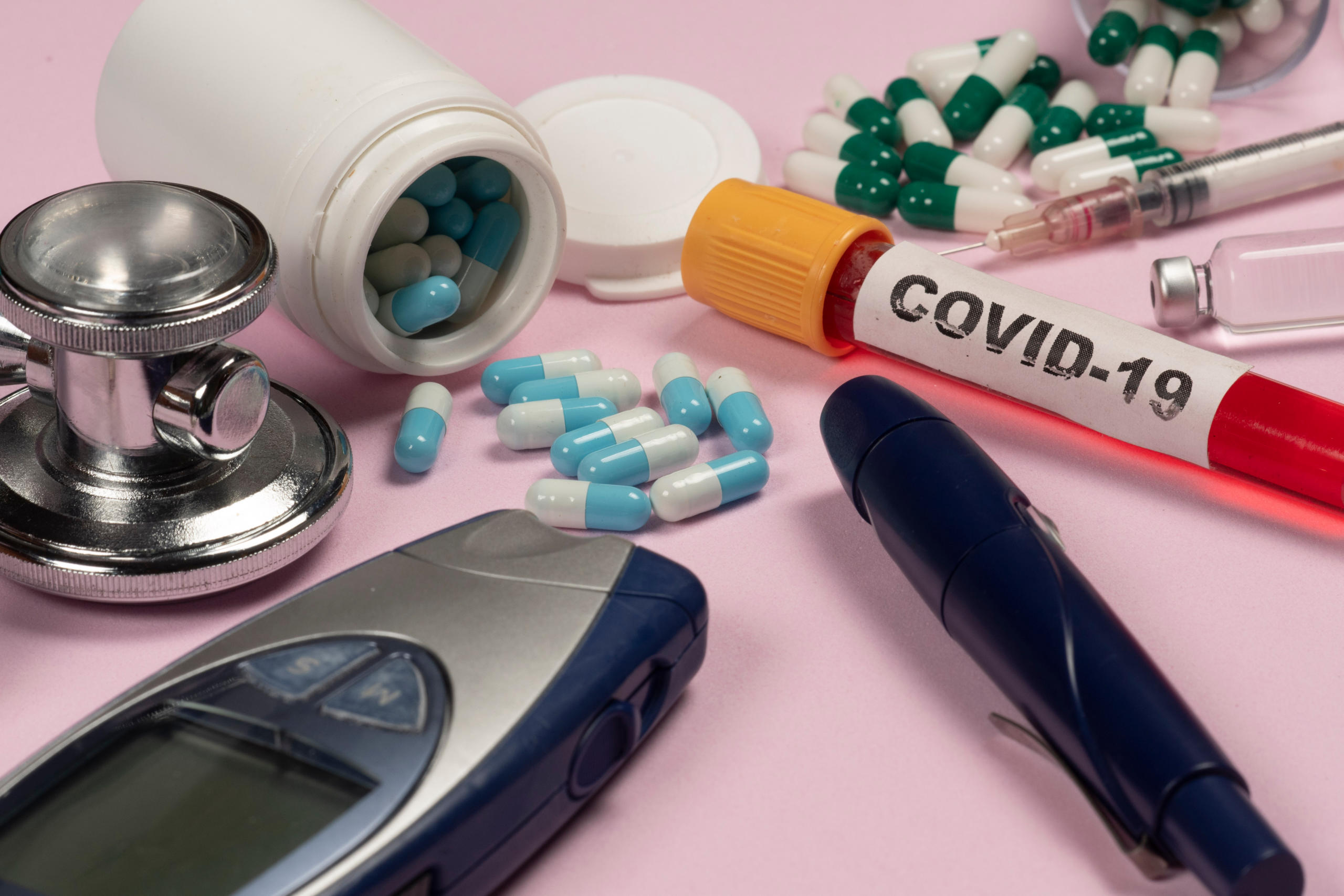Does Diabetes Promote COVID-19, or Does COVID-19 Promote Diabetes?
Blog post by Jasmin Skinner
The prevalence of diabetes has been steadily rising over the past few decades and was the ninth leading cause of death worldwide in 2019 [1]. During the COVID-19 pandemic, many of those living with diabetes were required to follow strict guidelines to protect themselves against infection as they were at high risk of morbidity and mortality. In this blog, we’ll be taking a look at the links between angiotensin-converting enzyme 2 (ACE2) expression and diabetes, as well as incident diabetes and long COVID.
ACE2 Expression and Diabetes
Early in the pandemic, a clear link between severe COVID-19 cases and diabetes was observed. COVID-19 patients with diabetes are at higher risk of hospitalization and death post-infection [2]. Increased ACE2 expression has been observed across various tissues in rodent models of diabetes including the lungs, kidney, heart, and pancreas [2]. Since ACE2 is the receptor required for SARS-CoV-2 viral entry, these findings provide insight into why diabetic patients experience more severe infections. Increased levels of furin, a cellular protease involved in facilitating viral entry into the cell, has also been observed in diabetic patients and is likely another contributing factor to infection severity [2]. However, the altered metabolism of a hyperglycemic state may play a larger role than expected.

Proximal tubular cells isolated from diabetic patients have also been found to exhibit altered cellular respiration, inducing a switch from oxidative phosphorylation to aerobic glycolysis [3]. Increased glycolysis drives the metabolism of pro-inflammatory monocytes and macrophages and amplifies viral load upon infection. However, dichloroacetate, an inhibitor of aerobic glycolysis, can significantly reduce viral load [3]. ACE2 expression is also enhanced in kidney organoids due to elevated glucose levels in diabetic conditions, and these imbalances can be directly linked to higher viral loads in COVID-19 patients [3].
Incident Diabetes and Long COVID
One study published in 2022 sought to determine the link between incident diabetes and the effects of long COVID, a condition characterized by new, recurring, or ongoing health problems following initial SARS-CoV-2 infection. Although none of the participants were diagnosed with diabetes prior to infection, those that survived the first 30 days of infection were more likely to require the use of antihyperglycemic medication and/or develop incident diabetes compared to those who had not tested positive for the virus [4]. Furthermore, individuals with severe illness were determined to be at a greater risk of developing diabetes [4].
Conclusion and Future Perspectives
Although the relationship between SARS-CoV-2 infection and diabetes has become more apparent, their effects on each other have yet to be fully understood. While diabetes enhances viral loads of SARS-CoV-2, the rise of incident diabetes following infection may yet compound this problem. Consequently, additional preclinical and clinical studies are required to clarify the relationship between these conditions, and ultimately inform clinical management and treatment.
About the Author
About the Author

Jasmin Skinner is an undergraduate student at the University of Western Ontario completing a Specialization in Biology and a Minor in Chemistry, with focused interest in applying these concepts to environmental conservation. As a lover of the outdoors and the arts, much of her time is spent in nature and within the local London art community, creating and connecting with all walks of life. After graduating, she hopes to continue her passion of finding unconventional solutions to environmental issues by working with nature, not against it.
References
- World Health Organization [Internet]. Diabetes; 2021 Nov 10 [cited 2022 Jul 04]. Available from: https://www.who.int/news-room/fact-sheets/detail/diabetes.
- Muniyappa R, Gubbi S. COVID-19 pandemic, coronaviruses, and diabetes mellitus. Am J Physiol Endocrinol Metab. 2020;318(5):E736-41. DOI: 10.1152/ajpendo.00124.2020.
- Garreta E, Prado P, Stanifer ML, Monteil V, Marco A, et al. A diabetic milieu increases ACE2 expression and cellular susceptibility to SARS-CoV-2 infections in human kidney organoids and patient cells. Cell Metab. 2022;34(6):857-73. DOI: 10.1016/j.cmet.2022.04.009.
- Xie Y, Al-Aly Z. Risks and burdens of incident diabetes in long COVID: a cohort study. Lancet Diabetes Endocrinol. 2022;10(5):311-21. DOI: 10.1016/S2213-8587(22)00044-4.